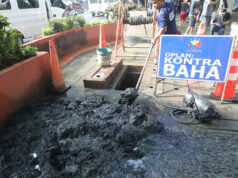Inflation for poor households hits 6.5%
By Vann Marlo M. Villegas
SECOND-QUARTER inflation, as reflected in goods and services widely used by low-income households, rose to 6.5%, its highest level in almost four years, led by utilities and staple food items, according to the Philippine Statistics Authority (PSA).
The inflation rate for the consumer basket configured for items likely to be purchased by the bottom 30% income category accelerated from 5.3% in the first quarter and 2.7% a year earlier. The second-quarter reading was the highest since the 6.8% posted in the third quarter of 2014.
For all households, the PSA is scheduled to report July inflation data on Aug. 7.
The Consumer Price Index (CPI) for the bottom 30% income segment reflects a heavier weighting for food, beverages and tobacco (FBT), to more accurately capture the spending patterns of the poor.
The PSA noted that all prices in those commodity groups rose at a faster rate in the second quarter.

“Annual inflation picked up in the second quarter primarily because of rising fuel costs and higher taxes on some products such as sugar-sweetened beverages and cigarettes,” said Guian Angelo S. Dumalagan, market economist at the Land Bank of the Philippines (LANDBANK).
“Weather disturbances and a weaker peso also played a role in pushing inflation higher,” he added.
Mr. Dumalagan was referring to the inflationary effects brought by the passage of the Tax Reform for Acceleration and Inclusion (TRAIN) Act, which slashed personal income tax rates but also introduced additional levies on consumer goods such as fuel, cars and sugar-sweetened drinks.
Security Bank Corp. economist Angelo B. Taningco added: “The CPI inflation for the bottom 30% spiked in second quarter because of sharper price increases in food and tobacco as well as fuel, light, and water.”
“Food supply disruptions, higher excise taxes on tobacco, rising global oil prices, and peso depreciation have all contributed to the Q2 inflation for the bottom 30%,” he added.
For the quarter, the fuel, light, and water index led the charge as inflation in this segment was 8.7%, against the 6.1% recorded in the first quarter and 4.8% a year earlier.
The FBT index rose 7.1% in the second quarter compared to 5.9% in the first quarter and 2.8% in the second quarter of 2017.
The index for food only accelerated to 6.2% from 5.3% in the first quarter and 2.7% a year earlier.
The PSA noted a 10.8% gain in corn prices during the period compared with the 8.5% year-on-year increase in the first quarter. Higher annual mark-ups were also recorded in fruits and vegetables (7.5% from 6.5%), cereals (6.0% from 4.1%), rice (4.9% from 3.1%), cereal preparations (2.3% from 2.1%), dairy products (2.1% from 1.6%), and “miscellaneous foods” (2% from 0.6%).
On the other hand, price growth slowed though inflation remained high in meat (6.4% from 7.3%) and fish (11.1% from 11.5%). Price growth in eggs, meanwhile, remained steady at 2.1%.
Inflation for the bottom 30% segment in the National Capital Region (NCR) was 6.6%, accelerating from the 5.9% posted in the first quarter. Those outside the NCR saw a price pickup of 6.5% from 5.3% in the previous quarter.
On a quarter-on-quarter basis, inflation for the bottom 30% slowed to 1.4% from 2.8% in the first quarter, with the PSA noting that all commodity groups recorded slower quarterly increases during the period except for services and miscellaneous goods.
“This reflects the easing impact of the TRAIN law. In particular, price adjustments were much less in the second quarter as majority of the planned price hikes were already implemented in the prior quarter,” said LANDBANK’s Mr. Dumalagan.
Still, the economist expects “a higher level of inflation” in the third quarter due to rising fuel prices, “elevated” food costs, and a depreciating peso.
“Inflation might peak in July or August,” Mr. Dumalagan said.
Security Bank’s Mr. Taningco added: “I continue to expect inflation for the bottom 30% to remain elevated in the third quarter given adverse weather conditions, food supply disruptions, peso depreciation, high oil prices, and hikes in minimum wages and transport fares.”



